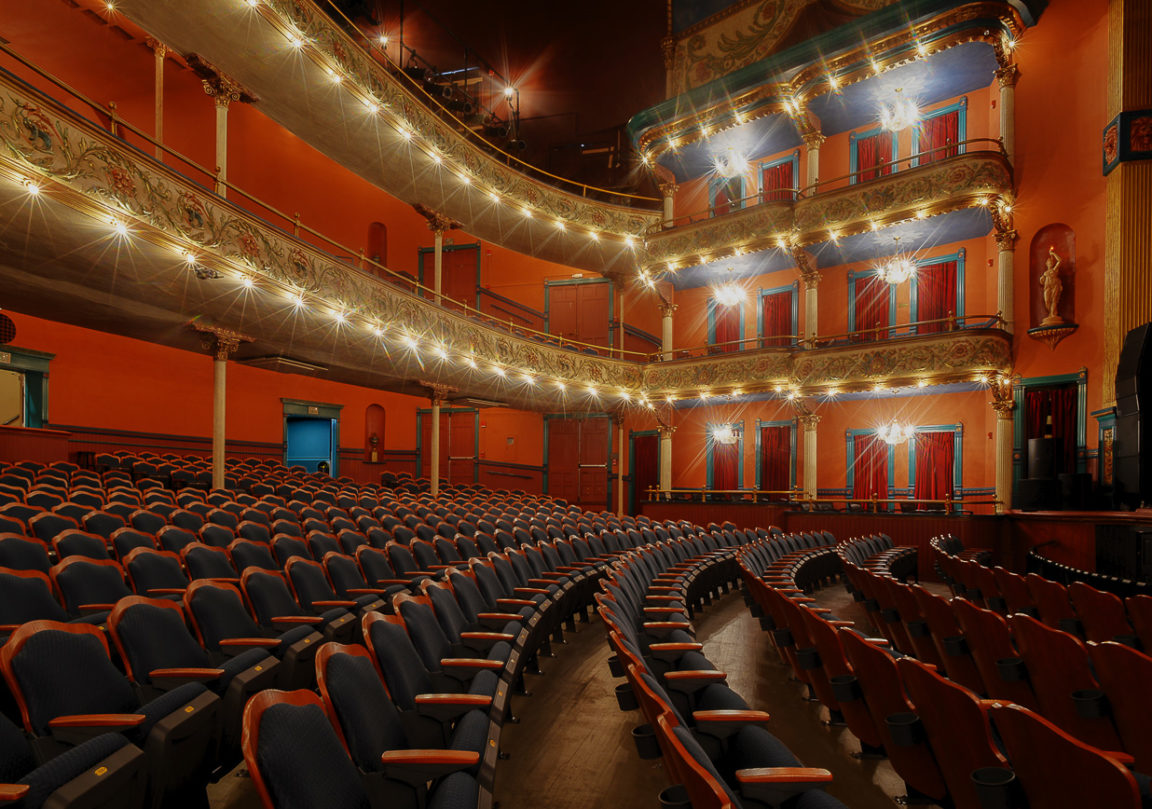

Gradually White theatre owners, including the Grand Opera House owners, began to book African-American companies.
#THE GRAND OPERA HOUSE FULL#
White performers with blackened faces impersonated and satirized African Americans in variety shows full of jokes and songs. Throughout the life of the opera house, the most popular entertainment in the United States was blackface minstrel shows. In one instance, a company staged a horse race on stage with treadmills and fast spinning scenery to provide the illusion of motion. Farmers stood in the aisles on Saturdays for musicals and melodramas performed by stock companies who brought in sets and scenery by the railcar load. The Grand Opera House served the entire community. Henrik Ibsen’s Ghosts appeared in Meridian while it was still banned in London. Mixed into the run-of-the-mill plays, the opera house played some of the latest, most daring material from Europe.
#THE GRAND OPERA HOUSE FREE#
Audience promotion included drawing for door prizes, free “ladies tickets,” and at least once having the lucky winner of a drawing catch his pig on stage.Īt other times the world’s leading actors and actresses graced the opera stage - Sarah Bernhardt appeared in La Tosca, for example.
#THE GRAND OPERA HOUSE SERIES#
Stock companies, groups of actors affiliated with a theatre, often presented a series of plays during a week’s run, all of them well-worn favorites. Most of the plays presented at the Grand Opera House were melodramas - simple plays with easily recognizable villains and heroes, such as Davy Crockett: Be Sure You’re Right Then Go Ahead. Such theatrical display was not the norm.


Those unable to purchase tickets watched carriages come and go with awe and excitement. Meridian’s elite turned out in formal dress, although almost none of them would understand a word of the operas. The Grand Opera House shimmered with wallpaper embedded with glitter reflecting light from the massive “Sunburner” chandelier. A German-language company from New York performed Johann Strauss’s The Gypsy Baron the first night and Adolph Mueller’s The King’s Fool the second. To inaugurate the Grand Opera House, the brothers chose two operas in their native language, German. Employees would work in both - handling the stage sets, selling the tickets, and paying the performers as well as handling merchandise next door. The department store and the opera house would support one another. The theatre was one flight up on the second floor. The first floor of the opera house was retail space. They finished the Grand Opera House in 1890. Their theatres were famous for good acoustics, sight lines, and adequate stage facilities. The McElfatrick family built most of the theatres in New York and around the country. For a century the store served to inspire shoppers to enjoy spending their money.īusiness came first, but Marks and Rothenberg brought in the most renowned theatre design company in the United States to plan their opera house. The rows of floors awed the observer with a sense of wealth, prosperity, and well-being. One reporter wrote that the Marks-Rothenberg store, the exterior of which was designed in the Romanesque Revival style, reminded him of a theatre when he stood in the atrium’s center and looked up. Yeomen prided themselves on buying as little as possible from stores sharecroppers had almost no cash to spend. The majority of the population lived as yeoman farmers or sharecroppers. The brothers gambled big because shopping had never been a pleasurable experience for most Mississippians. The architect created a store to serve as a monument to the “goddess of commerce.” Torgenson, who was then living in Meridian, to design a new store and an elegant opera house to be located a few blocks west of the original store. In 1889 they hired a Swedish immigrant architect, G. Prospering, they decided to operate an opera house for fun and profit, serving the thousands of traveling salesmen and other rail passengers spending the night in town. Marks and Levi Rothenberg opened a department store on Front Street adjacent to the railroad tracks. The Grand Opera House was the work of German-Jewish immigrants who settled in the city in the late 1800s when the railroads and the booming timber industry made Meridian a major commercial distribution center. This long-closed opera house, with its High Victorian architectural style, re-opened in September 2006. Between 18 the Grand Opera House in Meridian, Mississippi, provided east Mississippi and west Alabama with varied entertainment, ranging from operas in a variety of languages to theatrical entertainment and minstrel shows.


 0 kommentar(er)
0 kommentar(er)
